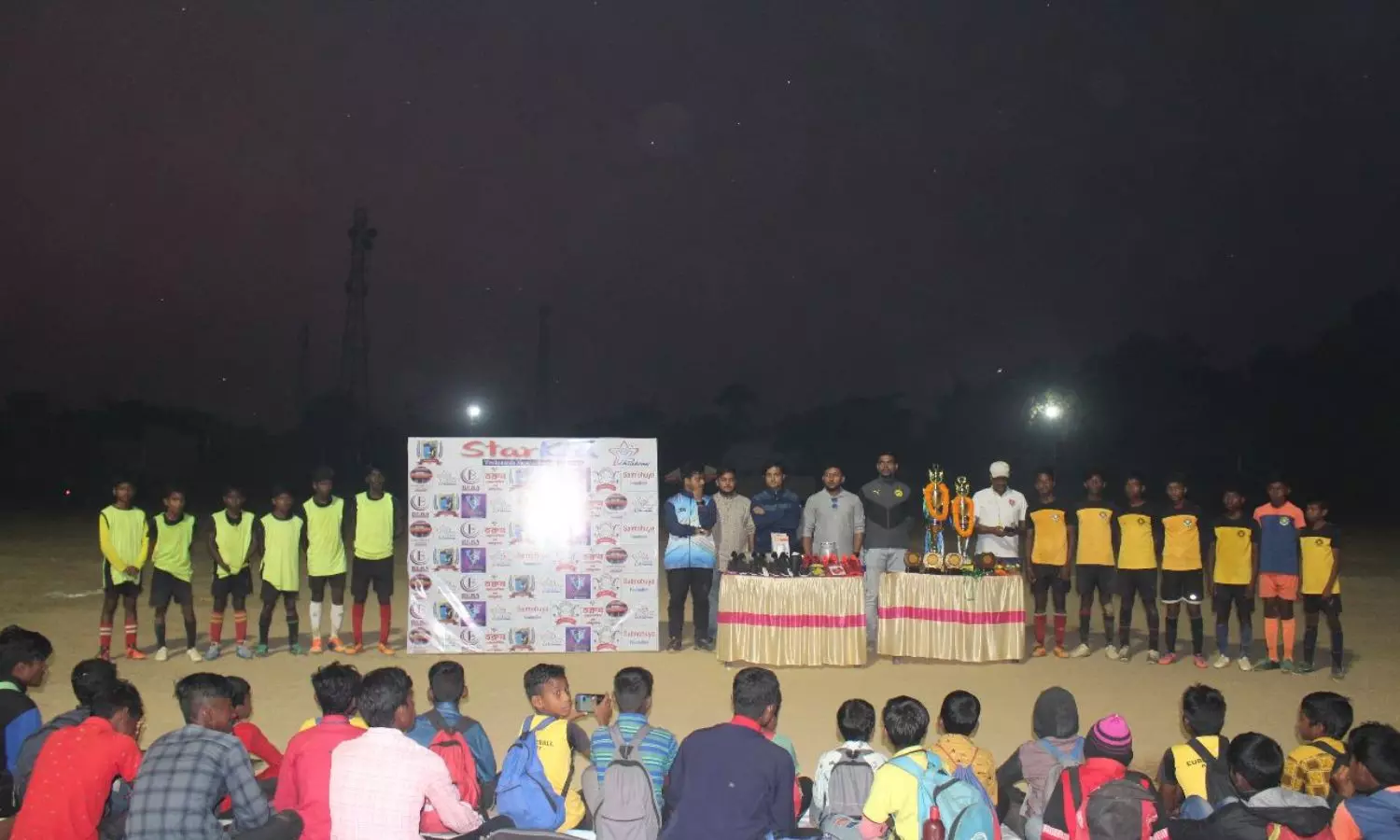Football
How the FIFA World Cup gives Jhargram's tribal kids a new life
For many, the 2022 FIFA World Cup has brought with it a first chance of watching modern football, as well as to learn about the world.

The 'World Cup' presentation ceremony in Jhargram
Jhargram: Kandan Murmu, a 12-year-old tribal boy from West Bengal's 'Jungle Mahal', where villagers are usually advised to complete their outdoor activities by evening due to Maoist threats, leaves home at the crack of dawn these days. He cycles for around 30 kilometres, reaching the village of Binpur by 7 am, hoping to make it to Brazil's starting XI.
The FIFA World Cup is into its climactic stage in Qatar - some 4000 km away from here, but even in this nondescript village in eastern India, the atmosphere is no less euphoric.
Around 40 boys of the Binpur High School, who are watching a FIFA World Cup for the first time, are also involved in a mini-World Cup of their own. They had not watched a football match on television before this, but now are turning up for faux versions of Brazil, Argentina, France and so on.
"In a district where youth footballing culture is almost nil, where most school teams play without the offside rule and still continue to employ a sweeper, these boys come almost 20-30 kms by cycle every day braving ridiculous extremities of weather - just to play the beautiful game," said Debjan Sengupta, the head coach of the Starkid Football Academy, who took the lead in organising this tournament.
READ | What is the new FIFA World Cup format, can it help India? — Explained
"These kids don't have basic food, clothes to wear, but they have boots, jerseys, and a football. They have a sense of the craziness of the beautiful game, without actually understanding how beautiful it could be," he said.
Take the case of Sengal's captain - Habu Kisku - a hard pressing striker who makes up with his adrenaline what he lacks in nutrition. Habu's usual diet comprises rice starch water and salt at home. His parents cannot afford to send him any food at the hostel. His prime source of nutrition is the midday meal provided by his school.
Habu is most at home when he has a ball at his feet. During the World Cup, he has been trying his best to know all about the country of Senegal. A trial with Kolkata's United Sports Club is on the horizon, but he is more concerned about living up to Senegal's reputations.
"I have been able to show 11 matches to the kids so far. This is the first time these kids are watching a 90-minute match. I also showed them highlights of earlier World Cup matches. Many of them started supporting Uruguay after hearing the story of Luis Suarez's handball in 2010," said Sengupta.
"I have a group of weird supporters, and it's fun. One kid came up to me and said that he would support Qatar because no one else is," he laughed.
A World Cup in Jhargram
Italy and France fought it out in the final of Binpur's World Cup, even as Germany and India (no complicated qualification pathway here!) lost out in the semifinals. Netherlands, Brazil, Argentina, Cameroon, Senegal, and South Korea were the teams knocked out in group stage.
Champions Italy
The only catch in Binpur's World Cup was that it was a three-touch five-a-side tournament. This means that if a player took more than three touches, or the ball went above the waistline, it would amount to a foul. If a team accumulated four fouls, a penalty would be awarded to the opponents, without the goalkeeper in goal.
All these rules, Sengupta said, was to pay homage to the great Syed Abdul Rahim, India's legendary football coach in the 1950s.
"He (Rahim) is the architect of Indian football. He introduced this way back in 1950 as a part of training footballers technically. Any one who wants to start working in football should begin by doing something for him. It's because of him that we came up with the 3-touch concept, this improves the children's technical side of the game," he said.
Champions Italy were given the 'Rahim Saab Champions trophy', while runners-up France were given the 'Dr Socrates trophy', celebrating Brazil's legendary midfielder who remains much celebrated in India because of his anti-dictatorial political stance.
Jungle Mahal and football
Jhargram is part of a region still colloquially referred to as the 'Jungle Mahal', where the majority of the population are Adivasis and Santhals. They remain cut off from many facilities available in most other parts of country. While online delivery services have reached district capital Jhargram, Binpur still does not know Swiggy or Zomato.
And it is this prevailing atmosphere of cultural darkness that Sengupta feels he is trying to alleviate. When he sees 'his children' dance on the red soil and watch the FIFA World Cup with rapt attention - following the fortunes of countries they are hearing about for the first time - he feels he is being able to create some difference.
"In the 2000s, the Adivasi youth footballing community had very few chances. Football is slowly spreading here, there's a growing belief that these kids can be good enough to put on the India jersey. The recent National Games-winning Bengal team consisted of many players from this region," he said.
Brazil's Kandan Murmu or Senegal's Habu Kisku could soon be a part of that next crop.
